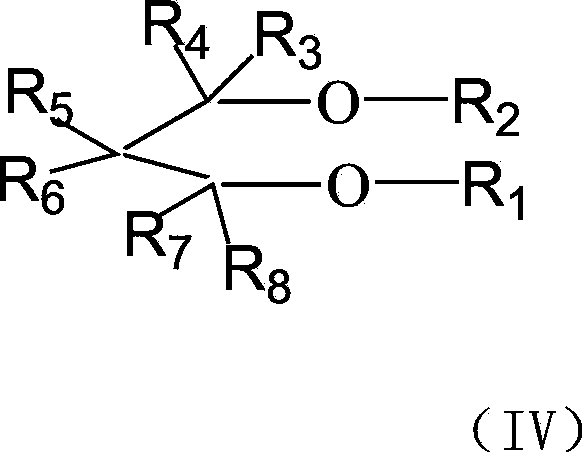Polypropylene with narrow distribution of molecular weight
A technology of molecular weight distribution and polypropylene, which is applied in the field of propylene polymers with narrow molecular weight distribution, can solve the problems of increasing product cost and so on
- Summary
- Abstract
- Description
- Claims
- Application Information
AI Technical Summary
Problems solved by technology
Method used
Image
Examples
Embodiment 1
[0104] 1) Raw materials
[0105] Preparation of the main catalyst: After fully replacing the 16L pressure-resistant reactor with a stirrer with nitrogen, add 10L ethanol, 300mL 2-ethylhexanol, 11.2g iodine, 8g magnesium chloride and 640g magnesium powder into the reactor. While stirring, the temperature of the system was raised to 75° C. for reflux reaction until no more hydrogen gas was discharged. Stop the reaction, wash with 3L of ethanol, filter and dry to obtain dialkoxymagnesium carrier. The obtained dialkoxymagnesium carrier has a D50 of 30.2 μm, a span value of 0.81, and an m value of 0.015. Take 650 g of the above-mentioned dialkoxymagnesium carrier, 3250 mL of toluene and 65 mL of 2-isopropyl-2-isopentyl-1,3-dimethoxypropane to prepare a suspension. In a 16L pressure-resistant reaction kettle that has been repeatedly replaced by high-purity nitrogen, add 2600mL of toluene and 3900mL of titanium tetrachloride, raise the temperature to 80°C, then add the prepared sus...
Embodiment 2
[0115] 1) raw material (with embodiment 1)
[0116] 2) test device (with embodiment 1)
[0117] 3) Test conditions
[0118] Step (1) pre-polymerization: the reaction pressure is 2.5MPa, the reaction temperature is 10°C, and the reaction time is 12 minutes; the feed amount of the main catalyst and triethylaluminum are 0.4g / hour and 0.058mol / hour respectively; the feed amount of propylene 10 kg / hour.
[0119] (2) step gas phase polymerization: 91 DEG C of reaction temperature, reaction pressure is 2.3MPa, and reaction time is 60 minutes; The feed rate of propylene is 30 kilograms / hour; The feed rate of hydrogen is 0.4 gram / hour; The propylene molar ratio was 0.008.
[0120] 4) Test results
[0121] The continuous test was carried out for 48 hours according to the above conditions, and the operation of the device was stable. The polymer obtained by the reaction was analyzed and tested, and the results are listed in Table 1.
Embodiment 3
[0123] 1) raw material (with embodiment 1)
[0124] 2) test device (with embodiment 1)
[0125] 3) Test conditions
[0126] Step (1) pre-polymerization: reaction pressure is 2.5MPa, reaction temperature is 10°C, reaction time is 12 minutes; main catalyst, triethylaluminum, dicyclopentyldimethoxysilane DCPDMS (commonly known as D-Donor) feed Amounts are 1.1g / hour, 0.051mol / hour, 0.0082mol / hour respectively; Al / Si (mol / mol)=6.2; Propylene feed rate is 10 kg / hour
[0127] (2) Step gas phase polymerization: 98 DEG C of reaction temperature, reaction pressure is 2.3MPa, and reaction time is 60 minutes; The feed rate of propylene is 30 kilograms / hour; The feed rate of hydrogen is 0.6 gram / hour; The propylene molar ratio was 0.012.
[0128] 4) Test results
[0129] The continuous test was carried out for 48 hours according to the above conditions, and the operation of the device was stable. The polymer obtained by the reaction was analyzed and tested, and the results are listed i...
PUM
 Login to View More
Login to View More Abstract
Description
Claims
Application Information
 Login to View More
Login to View More - R&D
- Intellectual Property
- Life Sciences
- Materials
- Tech Scout
- Unparalleled Data Quality
- Higher Quality Content
- 60% Fewer Hallucinations
Browse by: Latest US Patents, China's latest patents, Technical Efficacy Thesaurus, Application Domain, Technology Topic, Popular Technical Reports.
© 2025 PatSnap. All rights reserved.Legal|Privacy policy|Modern Slavery Act Transparency Statement|Sitemap|About US| Contact US: help@patsnap.com



